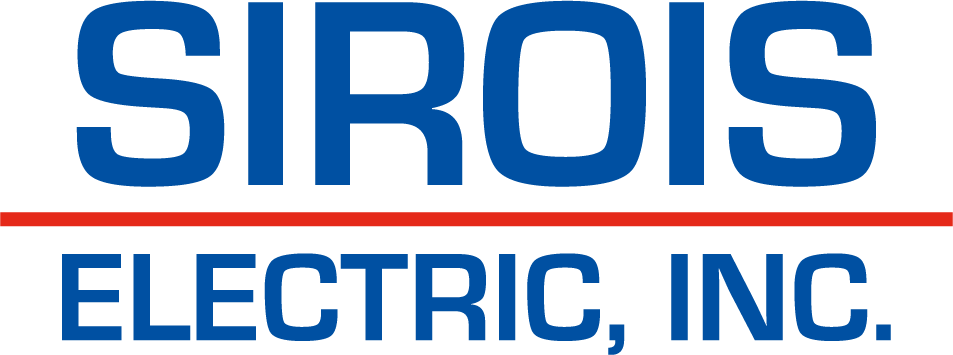A Guide to Electrical Requirements for Commercial Tenant Fit-Outs in Greater Boston
Contact Us
A Guide to Electrical Requirements for Commercial Tenant Fit-Outs in Greater Boston
Understanding Commercial Tenant Fit-Outs in Greater Boston
A commercial tenant fit-out refers to the process of customizing a leased space to meet the specific needs of a business. This involves modifying the interior layout, installing fixtures, and upgrading electrical systems to ensure the space functions properly for its intended use. In Greater Boston, where the commercial real estate market is competitive and evolving, tenant fit-outs are essential for creating functional and appealing workspaces that align with modern business demands.
Electrical requirements play a critical role in these fit-outs because they directly impact safety, functionality, and compliance with local regulations. From powering advanced technology to ensuring energy-efficient lighting , the electrical systems must be carefully planned and executed. Understanding these requirements upfront can help avoid costly delays and ensure a smooth transition into the new space.
Key Electrical Code and Regulatory Frameworks
The Massachusetts electrical code serves as the foundation for all commercial tenant fit-outs in Greater Boston, with updates like the 2025 Commercial Stretch Code introducing stricter energy efficiency standards. These codes are designed to promote sustainability and reduce carbon footprints, making them especially relevant for businesses aiming to meet green building goals. Compliance with these regulations is mandatory, and failure to adhere can result in fines or project shutdowns.
In addition to state-level requirements, Boston has its own set of city-specific codes that align with national standards such as the National Electrical Code (NEC) and the International Energy Conservation Code (IECC). These frameworks work together to ensure electrical systems are safe, efficient, and tailored to the unique needs of urban environments. Understanding how these layers of regulation interact is crucial for successful project execution.
Boston also has unique inspection protocols and climate zone considerations that affect electrical design. For example, buildings in colder climate zones may require additional heating system capacity , which impacts electrical load calculations. Navigating these nuances requires expertise and familiarity with local practices, underscoring the importance of hiring qualified professionals familiar with Greater Boston's regulatory landscape.
Planning Electrical Infrastructure for Fit-Outs
When planning an electrical infrastructure for a commercial tenant fit-out , it’s important to consider the primary systems most tenants require. These typically include lighting, power outlets , data cabling, HVAC controls , and emergency backup systems. Each of these components must be designed to handle the specific demands of the business while adhering to local codes and energy efficiency standards.
The initial planning phase should involve detailed load calculations, panel sizing, and determining the optimal location for meters and panels. Properly sizing the electrical panel ensures that the system can handle peak loads without overloading, while strategic placement of meters minimizes disruptions during installation. Taking these steps early on sets the stage for a successful and compliant fit-out process.
Scope of Electrical Work: Who Is Responsible?
In commercial tenant fit-outs, the allocation of responsibilities for electrical upgrades and repairs is often defined by the lease agreement. Typically, landlords are responsible for maintaining base building systems, while tenants handle modifications within their leased space. However, this division isn’t always clear-cut, and disputes can arise if expectations aren’t explicitly outlined in the lease.
Negotiating lease terms is a critical step in clarifying who bears responsibility for various aspects of the electrical work. For instance, relocating panel boxes or meters might fall under the tenant’s obligations, but only if specified in the lease. Ambiguities in lease language can lead to disagreements, so it’s essential to address these details before signing any agreements.
Practical examples highlight the importance of clarity in lease terms. For instance, if a tenant wants to install additional circuits for specialized equipment, they may need permission from the landlord and possibly share costs for related upgrades. Understanding legal responsibilities in common scenarios helps prevent misunderstandings and ensures both parties are aligned on project scope and budget.
Compliance with Energy Efficiency Regulations
Energy efficiency regulations significantly influence the design of electrical systems in commercial fit-outs. Lighting controls, occupancy sensors, and high-efficiency fixtures are now standard requirements in many areas, including Greater Boston. These measures not only reduce energy consumption but also contribute to long-term cost savings for tenants and property owners alike.
For mixed-use buildings or spaces exceeding certain square footage thresholds, additional requirements may apply. For example, larger spaces might need advanced metering systems or renewable energy integration to comply with decarbonization goals. Staying informed about these regulations ensures that projects meet current standards and position themselves favorably for future updates.
Permit Process and Inspections in Greater Boston
Obtaining permits for electrical work in Greater Boston involves submitting detailed plans to local authorities and undergoing multiple inspections throughout the project. The process begins with filing an application that includes specifications for wiring, panels, and other components. Once approved, inspections are conducted at various stages to verify compliance with codes and safety standards.
Common challenges during this process include incomplete documentation, miscommunication between stakeholders, and scheduling conflicts with inspectors. To navigate these hurdles, it’s advisable to engage experienced contractors who understand the local permitting landscape and can anticipate potential issues. Proactive planning and clear communication are key to avoiding delays and ensuring a smooth approval process.
Coordination with Other Trades and Design Professionals
Effective coordination with electrical engineers and contractors is vital during the fit-out planning phase. These experts bring technical knowledge and practical insights that help identify potential conflicts and optimize system designs. Their involvement ensures that electrical plans integrate seamlessly with the overall project vision while adhering to code requirements.
Collaboration with HVAC, plumbing, and architectural teams is equally important to avoid costly code violations or project delays. For example, improperly routed conduits could interfere with ductwork or structural elements, leading to rework and increased expenses. By fostering open communication among all trades, project managers can streamline workflows and deliver high-quality results on time and within budget.
Electrical Safety and Habitability Requirements
Both landlords and tenants share obligations to maintain electrical systems in safe and habitable condition as mandated by Massachusetts law. This includes regular inspections, timely repairs, and adherence to manufacturer guidelines for equipment maintenance. Neglecting these duties can result in legal liabilities and jeopardize occupant safety.
Regular maintenance tasks may involve testing circuit breakers, inspecting wiring for wear and tear, and ensuring emergency lighting systems function properly. In cases of system failure, immediate action is required to restore functionality and prevent further damage. Prioritizing safety not only protects occupants but also enhances the longevity and reliability of the electrical infrastructure.
Budgeting and Cost Considerations for Electrical Fit-Outs
Several factors drive costs in commercial electrical fit-outs, including system upgrades, code compliance, and design changes. For example, replacing outdated panels or installing smart building technologies can incur significant expenses. Additionally, unforeseen issues like structural obstacles or hidden wiring problems may necessitate costly adjustments mid-project.
To manage and share costs effectively, tenants and landlords can adopt strategies such as negotiating shared responsibility clauses in leases or setting aside contingency funds. Open dialogue and transparent financial planning help minimize surprises and ensure both parties are prepared for potential expenditures. By addressing cost considerations upfront, stakeholders can achieve a balanced approach to budgeting and resource allocation.
Common Electrical Upgrades in Commercial Fit-Outs
Among the most common electrical upgrades in commercial fit-outs are panel replacements , additional outlets , lighting changes, and integration of smart systems. These upgrades enhance functionality, improve aesthetics, and support modern operational needs. For instance, adding USB charging ports or LED lighting can create a more user-friendly and energy-efficient workspace.
Some upgrades, however, require special permitting, inspection, or design review due to their complexity or impact on existing systems. Relocating main panels or upgrading service entrances are examples of tasks that demand meticulous planning and coordination with local authorities. Understanding these requirements helps streamline the upgrade process and ensures compliance with applicable regulations.
Timeline and Project Management Essentials
A typical electrical fit-out timeline consists of several phases, starting with initial planning and design, followed by permitting, installation, and final inspections. Each phase has its own set of milestones and deadlines, making it essential to establish a realistic schedule from the outset. Delays in one area can cascade through the entire project, so proactive management is crucial.
Best practices for project management include maintaining clear communication channels, using project management software to track progress, and conducting regular check-ins with all stakeholders. Anticipating potential bottlenecks, such as slow permit approvals or supply chain disruptions, allows teams to adapt quickly and keep the project on track. By staying organized and focused, project managers can deliver successful outcomes efficiently and within budget.
Pitfalls and Mistakes to Avoid During Fit-Outs
Frequent missteps in commercial tenant fit-outs include skipping the permit process, misunderstanding lease allocation of responsibilities, and ignoring energy efficiency codes. For example, failing to secure proper permits can lead to fines or forced removal of installed systems, while overlooking lease terms may result in unexpected costs or disputes with landlords.
To avoid these pitfalls, tenants should thoroughly review lease agreements, consult with local experts, and stay informed about regulatory updates. In Greater Boston, where regulations can vary by neighborhood, working with professionals familiar with the area’s unique requirements is invaluable. By taking a proactive and informed approach, businesses can sidestep common errors and ensure a successful fit-out experience.
Frequently Asked Questions
Who bears responsibility for electrical upgrades in tenant fit-outs?
Responsibility for electrical upgrades in tenant fit-outs depends on the lease agreement. Generally, tenants are responsible for modifications within their leased space, while landlords handle base building systems. Carefully reviewing lease terms is essential to clarify obligations and avoid disputes.
What electrical codes must be followed in Greater Boston commercial fit-outs?
Commercial fit-outs in Greater Boston must comply with the Massachusetts state electrical code, Boston-specific ordinances, and national standards like the NEC and IECC. These codes ensure safety, efficiency, and alignment with regional climate considerations.
Do commercial spaces need to upgrade to meet new energy efficiency regulations?
Commercial spaces may need to upgrade to meet new energy efficiency regulations, particularly when undergoing renovations or expanding operations. Recent code changes emphasize sustainability, requiring features like advanced lighting controls and energy monitoring systems in certain scenarios.
What is the process for obtaining permits for electrical work in Boston?
To obtain permits for electrical work in Boston, applicants must submit detailed plans to local authorities and pass inspections at various stages of the project. Necessary documentation includes specifications for wiring, panels, and load calculations, ensuring compliance with safety and efficiency standards.
How can tenants ensure electrical systems are safe and compliant?
Tenants can ensure electrical systems are safe and compliant by conducting regular inspections, performing routine maintenance, and addressing issues promptly. If systems are found to be unsafe, tenants should seek legal recourse or collaborate with landlords to resolve the problem swiftly.
Conclusion
Understanding electrical requirements is essential for the success of any commercial tenant fit-out in Greater Boston. From navigating complex codes and regulations to managing costs and timelines, proper planning and execution are key to achieving compliance, safety, and efficiency. By addressing these aspects early in the process, businesses can avoid costly mistakes and create functional, sustainable workspaces.
To ensure your fit-out project succeeds, seek professional evaluation from qualified electricians or legal advisors at the start. Review your lease specifics carefully and consult local experts in Greater Boston for tailored guidance. With the right team and preparation, you can transform your commercial space into a thriving hub for your business.


